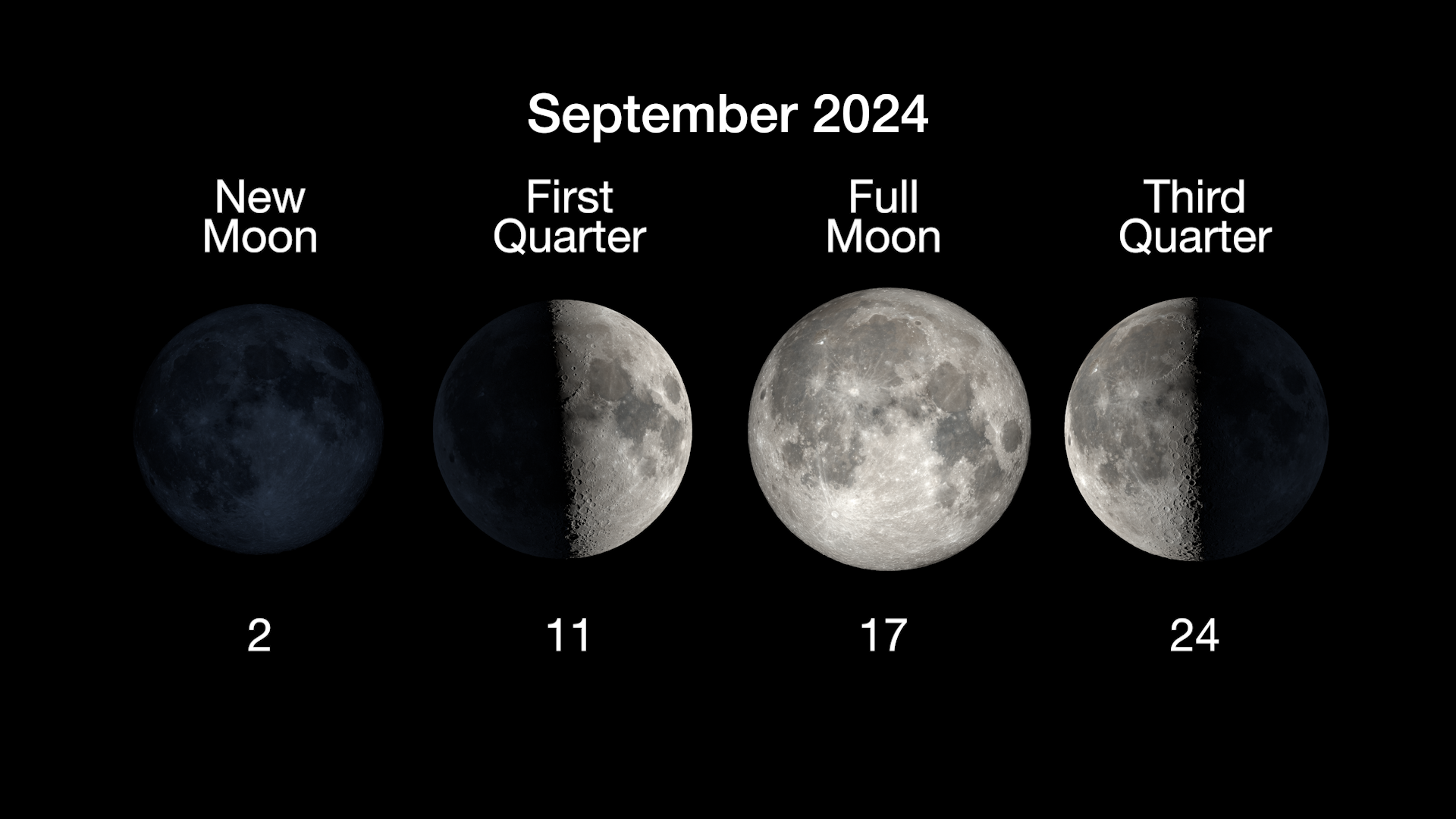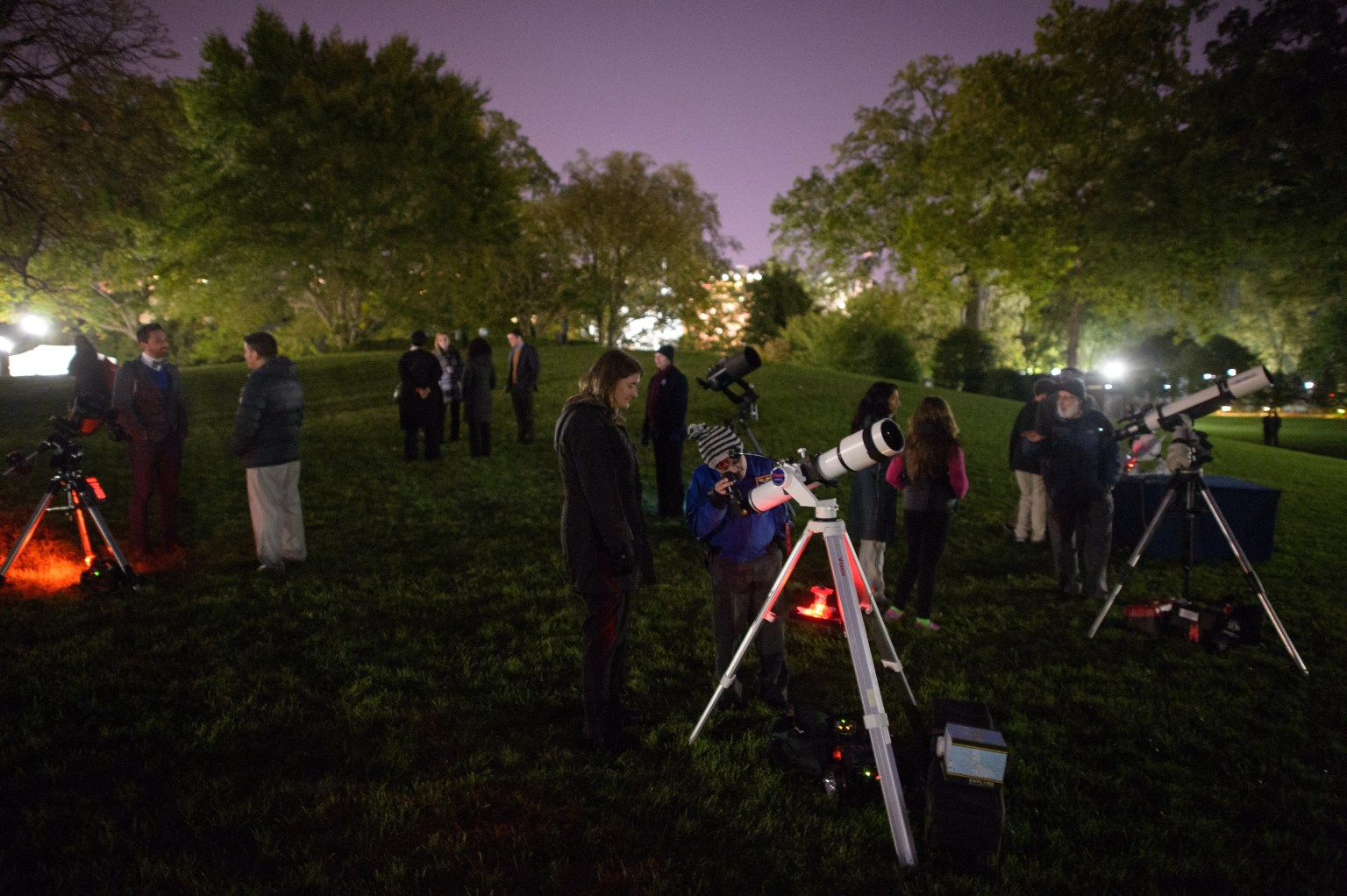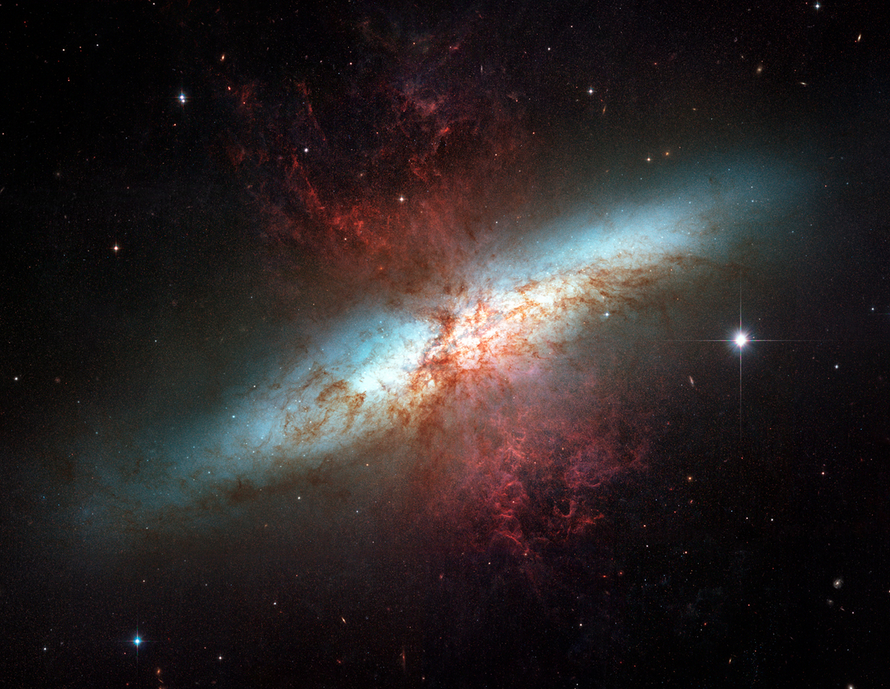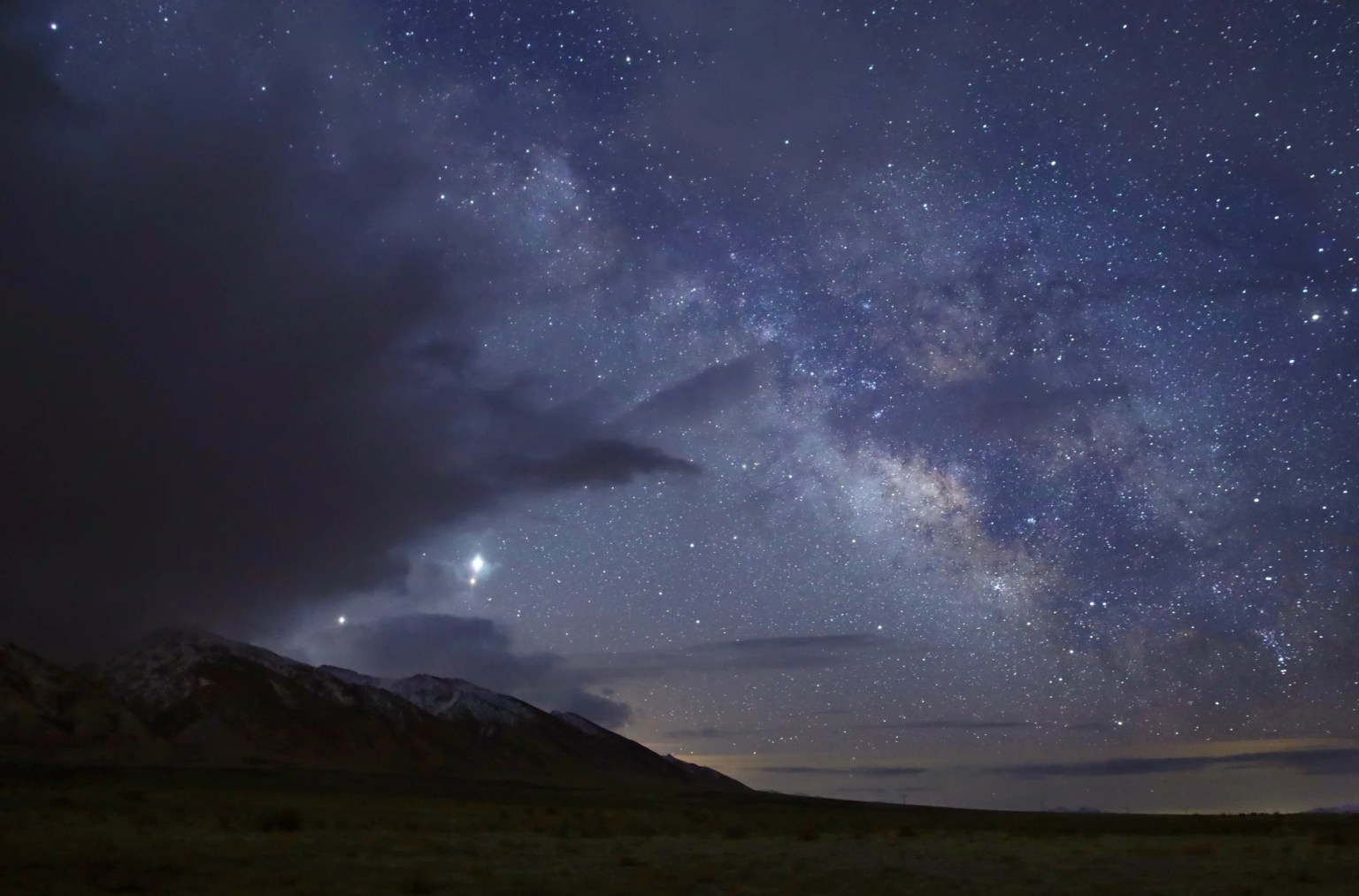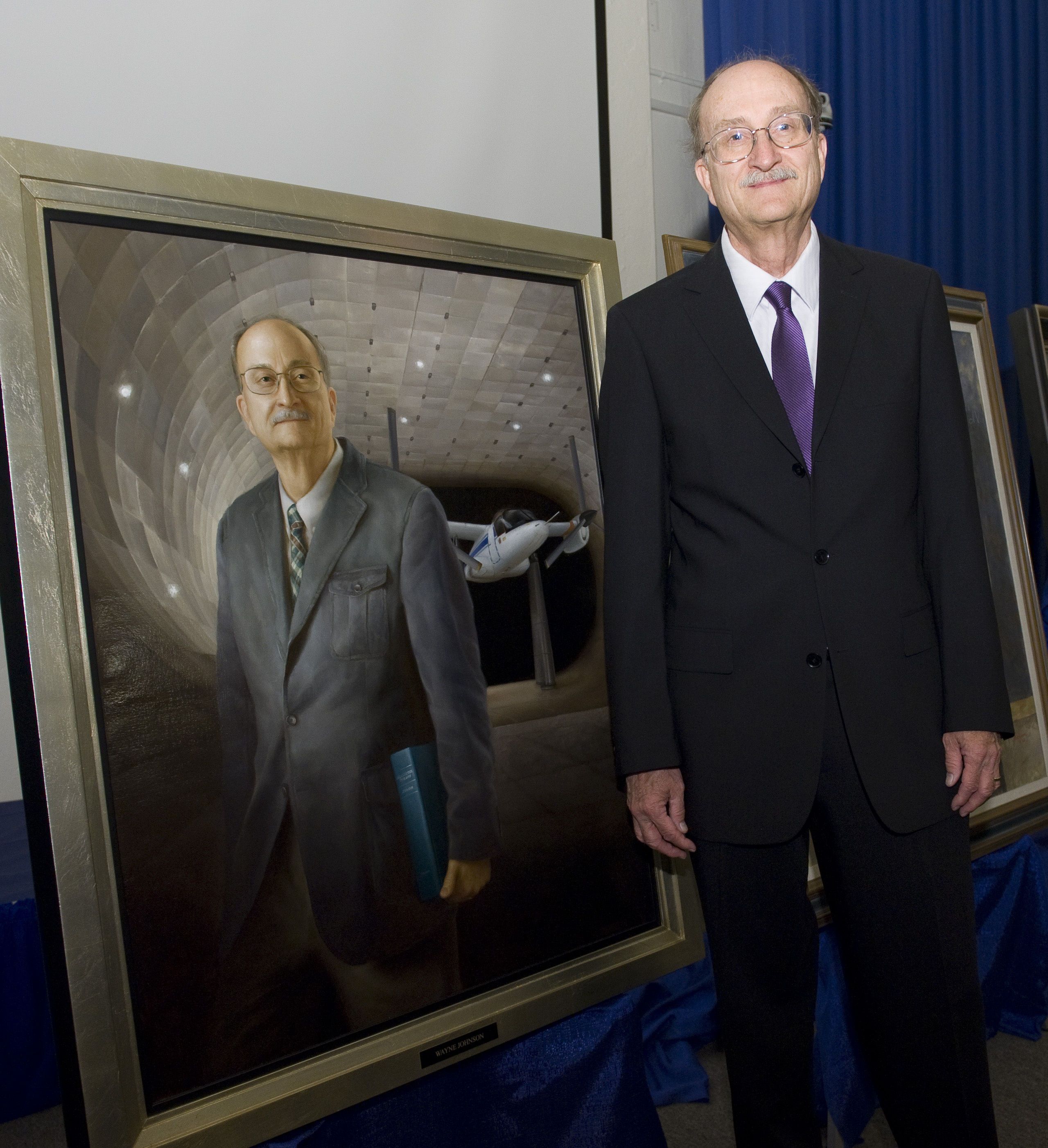The Next Full Moon is a Partial Lunar Eclipse; a Supermoon; the Corn Moon; and the Harvest Moon
The next full Moon will be Tuesday, September 17, 2024, at 10:35 PM EDT. The Moon will appear full from Monday evening through Thursday morning.
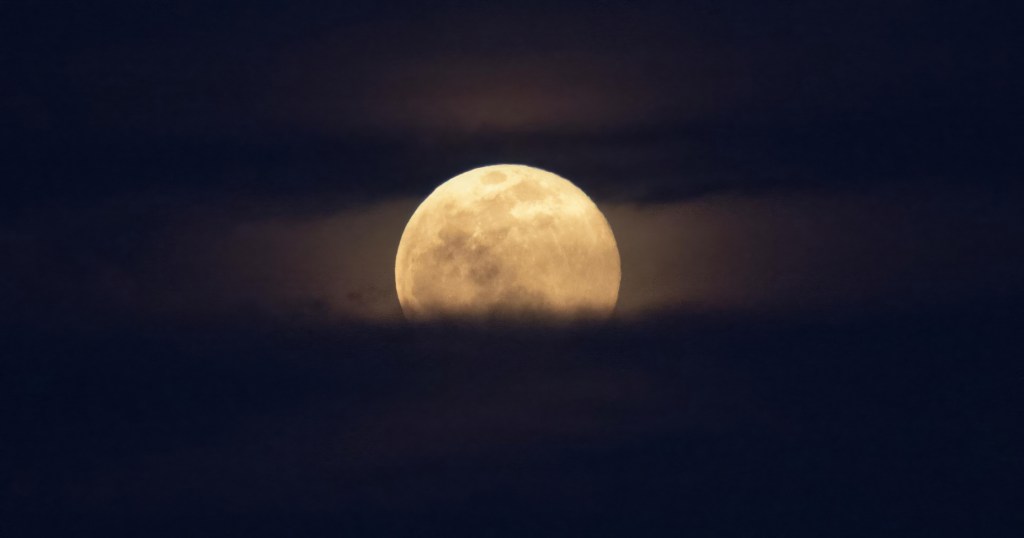
The Next Full Moon is a Partial Lunar Eclipse; a Supermoon; the Corn Moon; and the Harvest Moon
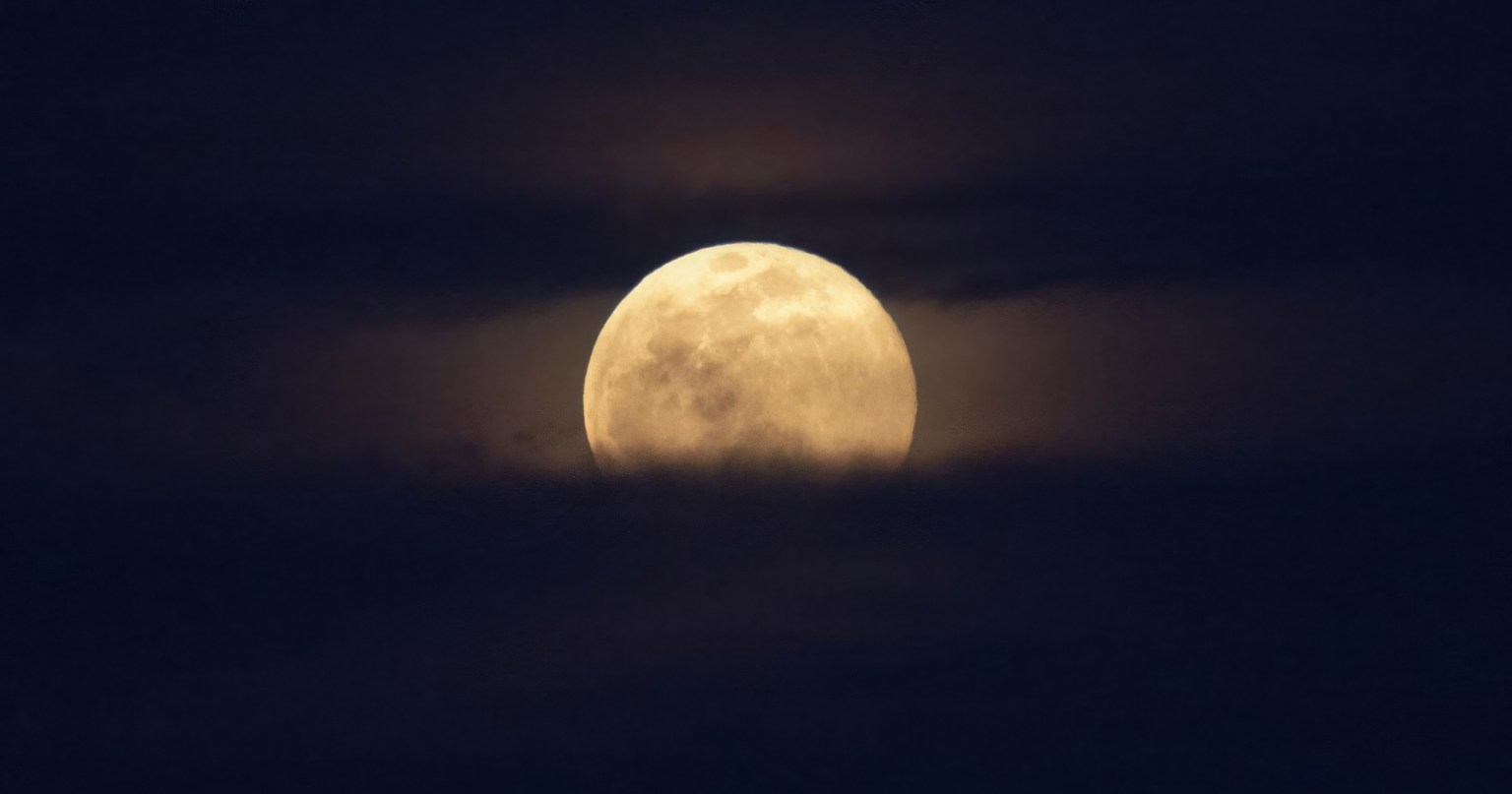
The Next Full Moon is a Partial Lunar Eclipse; a SuperMoon; the Corn Moon; the Harvest Moon; the Fruit or Barley Moon; the end of Ganesh Chaturthi and the start of Pitru Paksha; Madhu Purnima; the Mid-Autumn, Mooncake, or Reunion Festival Moon; Chuseok; and Imomeigetsu or the Potato Harvest Moon.
The full Moon will be Tuesday night, September 17, 2024, at 10:35 PM EDT. This will be on Wednesday from Newfoundland and Greenland Time eastward across Eurasia, Africa, and Australia to the International Date Line. Most commercial calendars will show this full Moon on Wednesday based on Greenwich or Universal Time. The Moon will appear full for about three days, from Monday evening through Thursday morning.
This will be a partial lunar eclipse. The Moon will start entering the Earth’s partial shadow at 8:41 PM EDT. The slight dimming of the Moon will be difficult to notice until the top edge of the Moon starts entering the full shadow at 10:13 PM. The peak of the eclipse will be at 10:44 PM with only the top 8 percent of the Moon in full shadow. The Moon will finish exiting the full shadow at 11:16 PM and the partial shadow on Wednesday morning at 12:47 AM.
This will be a supermoon. The term “supermoon” was coined by astrologer Richard Nolle in 1979 as either a new or full Moon that occurs when the Moon is within 90% of its closest to Earth. Since we can’t see new Moons, what has the public’s attention are full supermoons, the biggest and brightest Moons of the year. Although different publications use different thresholds for deciding which full Moons qualify, most agree this will be the second of four consecutive supermoons (effectively tied with the full Moon in October for the closest of the year).
The Maine Farmer’s Almanac first published “Indian” names for the full Moons in the 1930s and these names have become widely known and used. According to this almanac, as the full Moon in September the Algonquin tribes in what is now the northeastern USA called this the Corn Moon, as this was the time for gathering their main staple crops of corn, pumpkins, squash, beans, and wild rice.
As the full Moon closest to the autumnal equinox, this is the Harvest Moon. The first known written use of this name in the English language (per the Oxford English Dictionary) was in 1706. During the fall harvest season farmers sometimes need to work late into the night by moonlight. On average moonrise is about 50 minutes later each night. Around the Harvest Moon this time is shorter, about 25 minutes for the latitude of Washington, DC, and only 10 to 20 minutes farther north in Canada and Europe.
Other European names for this full Moon are the Fruit Moon, as a number of fruits ripen as the end of summer approaches, and the Barley Moon, from the harvesting and threshing of barley.
For Hindus, this full Moon marks the end of Ganesh Chaturthi and the start of Pitru Paksha. Ganesh Chaturthi (also called Vinayaka Chaturthi or Vinayaka Chavithi) is a 10 or 11 day festival honoring the god Ganesha that ends with this full Moon. Ganesha is easily recognized by his elephant head and is worshiped as the god of beginnings, wisdom, arts and sciences, and as the remover of obstacles. Throughout the festival celebrants offer food, sweets, and prayers to clay statues of Ganesha at home and on public stages. Traditions include chanting of Vedic hymns and Hindu texts, prayers, and fasting. On the last day (near the full Moon), people carry the statues to a nearby river or ocean and immerse them. As the clay dissolves, Ganesha is believed to return to his parents, the god Shiva and goddess Parvati, on Mount Kailash.
Pitru Paksha (fortnight of the ancestors) is a 15 days long festival that ends with the new Moon. During this time, Hindus honor their ancestors (pitrs) with rituals, food offerings, and scripture reading. Pitru Paksha is also known by a number of other names.
For some Buddhists in Bangladesh and Thailand this full Moon is Madhu Purnima, the Honey Full Moon Festival or the Honey-offering Festival. The legend is that when the Buddha was trying to bring peace between two factions in a forest, an elephant and a monkey fed him, with the elephant offering fruit and the monkey offering a honeycomb.
In China, Vietnam, and some other Asian countries, this full Moon corresponds with the Mid-Autumn Festival, a traditional harvest festival. In China, other names for this festival include the Moon Festival, the Mooncake Festival, and the Reunion Festival (with wives visiting their parents then returning to celebrate with their husbands and his parents). Part of the festival includes offerings to the Moon Goddess Chang’e (the name the China National Space Agency gives their lunar missions).
In Korea, this full Moon corresponds with the harvest festival Chuseok, during which Koreans return to their traditional hometowns to pay respect to the spirits of their ancestors.
This full Moon corresponds with the first of two Japanese Tsukimi or “Moon-Viewing” festivals, also called Imomeigetsu (which translates as “potato harvest Moon”) because of the tradition of offering sweet potatoes to the Moon. These festivities have become so popular that they are often extended for several days after the full Moon.
In many traditional Moon-based calendars the full Moons fall on or near the middle of each month. This full Moon is near the middle of the eighth month of the Chinese year of the Dragon and Rabi’ al-Awwal in the Islamic calendar, the month in which many Muslims celebrate Mawlid, the birth of the Prophet Muhammad. This full Moon is near the middle of Elul in the Hebrew calendar. Elul is a time of preparation for the High Holy Days of Rosh Hashanah and Yom Kippur. Customs include granting and asking others for forgiveness as well as beginning or ending all letters with the wish that the recipient will have a good year.
As usual, the wearing of suitably celebratory celestial attire is encouraged in honor of the full Moon. Go out and observe the Moon, enjoy this harvest season (including corn, fruit, and sweet potatoes, and honey), remember your ancestors, stay in touch with your parents, and forgive and ask forgiveness. Here’s wishing you a good year!
Comet C/2023 A3 (Tsuchinshan-ATLAS)
Pay attention to the news about Comet C/2023 A3 (Tsuchinshan-ATLAS)! There are a number of “ifs” so we don’t like to raise expectations. Similar visitors from the Oort Cloud have broken apart and fizzled out as they passed close to the Sun. If this comet survives its passage by the Sun (closest approach on September 27, 2024) and if the amount of gas and dust it gives off does not decrease significantly, this might be one of the best comets in a long time. If it strongly scatters sunlight towards the Earth it might even be visible in the glow of dusk just after its closest approach to Earth on October 12.
From the Washington, DC area and similar latitudes, this comet will be above the horizon before morning twilight begins from September 22 through October 4, with the current brightness curve predicting a steady increase in brightness from about visual magnitude 4 to near 3 (the smaller the number, the brighter the object). As it brightens it may be visible under dark sky conditions and even more impressive through binoculars or a telescope, although towards the start and end of this period it may be too low on the horizon to see when the sky is completely dark.
Between about October 4 and October 11 the Sun’s glare will mask visibility from the Northern Hemisphere. Check your local news or web sites for viewing information for your latitude. For example, Sky and Telescope reports that Southern Hemisphere skywatchers should fare better.
Comet C/2023 A3 (Tsuchinshan-ATLAS) will be at its closest to Earth on October 12 at 11:10 AM EDT. Around closest approach the comet’s brightness is predicted to peak at about visual magnitude 3 (similar to many stars). Forward scattering might increase the brightness significantly, possibly as high as -1 (brighter than every star except Sirius). How bright the comet actually appears will depend upon how much gas and dust it is giving off, which can change quickly. Also, brightness comparisons between comets and stars can be misleading as the light of the comet is spread out making it less distinct than a star with the same brightness.
The best time to look should be the evenings on and shortly after October 12 with the comet above the western horizon after sunset. The evening of October 12 the comet will be 4 degrees above the western horizon as evening twilight ends, similar in altitude and to the right of Venus. The comet is expected to dim as it moves away from the Earth, but will appear higher in a darker sky and set later each evening, which could make it easier to see. As evening twilight ends on October 13 it will be 10 degrees above the western horizon, 12 degrees on October 14, 16 degrees on October 15, etc. The brightness will decrease to about magnitude 6 by the end of October.
Meteor Showers
During this lunar cycle four minor meteors showers are predicted to peak at 5 or fewer visible meteors per hour (under ideal viewing conditions), making them basically not visible from our light-polluted urban areas.
Evening Sky Highlights
On the evening of Tuesday, September 17 (the evening of the full Moon), as twilight ends (at 8:10 PM EDT), the rising Moon will be 11 degrees above the east-southeastern horizon with Saturn to the upper right at 14 degrees above the horizon. Later in the evening the partial shadow of the Earth will cover a small upper part of the Moon. Bright Venus will be 2 degrees above the west-southwestern horizon with the star Spica on the horizon to the lower left. The bright star closest to overhead will be Vega, the brightest star in the constellation Lyra the lyre, at 87 degrees above the western horizon. Vega is part of the Summer Triangle along with Deneb and Altair. It is the 5th brightest star in our night sky, about 25 light-years from Earth, has twice the mass of our Sun, and shines 40 times brighter than our Sun.
As this lunar cycle progresses, Saturn and the background of stars will appear to shift westward each evening (as the Earth moves around the Sun). Bright Venus will shift to the left along the west-southwestern horizon, appearing slightly higher each evening. The waxing Moon will pass by Venus on October 5, Antares on October 7, and Saturn on October 14. Comet C/2023 A3 (Tsuchinshan-ATLAS) will be at its closest to Earth on October 12 at 11:10 AM. Assuming it survives its pass by the Sun on September 27 and depending upon how much gas and dust it gives off, it could be a good show in the evenings on and after October 12. See the comet summary above and keep an eye on the news for updates on this comet.
By the evening of Thursday, October 17 (the evening of the full Moon after next), as twilight ends (at 7:24 PM EDT), the rising Moon will be 9 degrees above the eastern horizon. Saturn will be 27 degrees above the southeastern horizon. Bright Venus will be 6 degrees above the west-southwestern horizon. Comet C/2023 A3 (Tsuchinshan-ATLAS) will be 22 degrees above the western horizon. The bright star closest to overhead will be Deneb at 80 degrees above the northeastern horizon. Deneb is the 19th brightest star in our night sky and is the brightest star in the constellation Cygnus the swan. Deneb is one of the three bright stars of the “Summer Triangle” (along with Vega and Altair). Deneb is about 20 times more massive than our Sun but has used up its hydrogen, becoming a blue-white supergiant about 200 times the diameter of the Sun. If Deneb were where our Sun is, it would extend to about the orbit of the Earth. Deneb is about 2,600 light years from us.
Morning Sky Highlights
On the morning of Wednesday, September 18 (the morning of the night of the full Moon), as twilight begins (at 5:55 AM EDT), the setting full Moon will be 15 degrees above the west-southwestern horizon. The brightest planet in the sky will be Jupiter at 71 degrees above the south-south eastern horizon. Near Jupiter will be Mars at 61 degrees above the east-southeastern horizon. Saturn will be below the Moon at 1 degree above the western horizon. The bright star appearing closest to overhead will be Capella, the brightest star in the constellation Auriga the charioteer, at 80 degrees above the northeastern horizon. Although we see Capella as a single star (the 6th brightest in our night sky), it is actually four stars (two pairs of stars orbiting each other). Capella is about 43 lightyears from us.
As this lunar cycle progresses, Jupiter, Mars, Saturn, and the background of stars will appear to shift westward each evening. After September 19 Saturn set before morning twilight begins. The waning Moon will pass by the Pleiades star cluster on September 22, Mars on September 25, Pollux on September 26, and Regulus on September 29. Comet C/2023 A3 (Tsuchinshan-ATLAS) will be above the horizon before morning twilight begins from September 22 through October 4. Comets are notoriously difficult to predict, but if the amount of gas and dust it gives off remains constant it should increase in brightness each morning. See the comet summary above and keep an eye on the news for updates on this comet.
By the morning of Thursday, October 17 (the morning of the full Moon after next), as twilight begins (at 6:22 AM EDT), the setting full Moon will be 11 degrees above the western horizon. The brightest planet in the sky will be Jupiter at 63 degrees above the west-southwestern horizon. Mars will be at 72 degrees above the south-southeastern horizon. The bright star appearing closest to overhead will be Pollux, the 17th brightest star in our night sky and the brighter of the twin stars in the constellation Gemini, at 75 degrees above the southeastern horizon. Pollux is an orange tinted star about 34 lightyears from Earth. It is not quite twice the mass of our Sun but about 9 times the diameter and 33 times the brightness.
Detailed Daily Guide
Here for your reference is a day-by-day listing of celestial events between now and the full Moon on October 17, 2024. The times and angles are based on the location of NASA Headquarters in Washington, DC, and some of these details may differ for where you are (I use parentheses to indicate times specific to the DC area). If your latitude is significantly different than 39 degrees north (and especially for my Southern Hemisphere readers), I recommend using an astronomy app or a star-watching guide from a local observatory, news outlet, or astronomy club.
Saturday night, September 14, is International Observe the Moon Night! See https://moon.nasa.gov/observe-the-moon-night/about/overview/ for more information.
Our 24 hour clock is based on the average length of the solar day. Solar noon on Sunday, September 15 to solar noon on Monday, September 16, will be the shortest solar day of the year, 23 hours, 59 minutes, and 38.6 seconds long.
Monday night into Tuesday morning, September 16 to 17, Saturn will appear near the full Moon. As evening twilight ends (at 8:12 PM EDT) Saturn will be 6 degrees to the left of the Moon. When the Moon reaches its highest for the night (at 12:17 AM) Saturn will be 4 degrees to the upper left. By the time morning twilight begins (at 5:54 AM) the Moon will be 1 degree above the west-southwestern horizon with Saturn 1 degree above the Moon. For parts of western North America and across the Pacific Ocean towards Australia the Moon will pass in front of Saturn. See http://lunar-occultations.com/iota/planets/0917saturn.htm for a map and information on the areas that will see this occultation.
Tuesday morning, September 17, will be the last morning that Mercury will be above the horizon as morning twilight begins (at 5:54 AM EDT).
As mentioned above, the full Moon will be Tuesday night, September 17, at 10:35 PM EDT. This will be on Wednesday from Newfoundland and Greenland Time eastward across Eurasia, Africa, and Australia to the International Date Line. Most commercial calendars are based on Greenwich or Universal Time and will show this full Moon on Wednesday. The Moon will appear full for about three days from Monday evening through Thursday morning.
This will be a partial lunar eclipse. The Moon will start entering the partial shadow of the Earth at 8:41 PM EDT. The slight dimming of the Moon will be difficult to notice until the top edge of the Moon starts entering the full shadow at 10:13 PM. The peak of the eclipse will be at 10:44 PM with just the top 8.4% of the Moon in full shadow. The Moon will finish exiting the full shadow at 11:16 PM and the partial shadow on Wednesday morning at 12:47 AM.
This will be the second of four consecutive supermoons, appearing larger than last month’s supermoon and effectively tied with the full Moon in October for the closest full Moon of the year.
Tuesday and Wednesday evenings, September 17 and 18, the star Spica will appear a little over 2 degrees from the bright planet Venus. On Tuesday evening as evening twilight ends (at 8:10 PM EDT) Spica will be to the lower left of Venus and on the verge of setting on the west-southwestern horizon. Wednesday evening Spica will be a few hundredths of a degree closer and will appear below Venus, but will set about 2 minutes before evening twilight ends.
Wednesday morning September 18, at 9:29 AM EDT, the Moon will be at perigee, its closest to the Earth for this orbit.
Thursday morning, September 19, will be the last morning the planet Saturn will be above the western horizon as morning twilight begins.
If you are interested in spotting the planet Neptune through a telescope, Friday evening, September 20, will be when it will be at its closest and brightest for the year. Neptune will reach its highest in the sky early Saturday morning (at 1:02 AM EDT).
Saturday night into Sunday morning, September 21 to 22, the Pleiades star cluster will appear near the waning gibbous Moon. The Pleiades will be 5 degrees to the lower left as they rise on the east-northeastern horizon (at 9:23 PM EDT), 1.5 degrees to the upper left by the time the Moon reaches its highest for the night (at 4:44 AM), and less than 1 degree to the upper left as morning twilight begins (at 5:59 AM). The Moon will actually pass through the Pleiades (at about 8 AM) when daylight will mask these stars from view.
Sunday morning, September 22, will be the first morning Comet C/2023 A3 (Tsuchinshan-ATLAS) will be above the horizon before morning twilight begins, with the current brightness curve predicting it at visual magnitude 4. Unless it breaks apart, this comet is likely to brighten each morning until October 4 (after which it will no longer be above the horizon before twilight begins).
Sunday morning, September 22, at 8:44 AM EDT, will be the autumnal equinox, the astronomical end of summer and start of fall.
Monday night into Tuesday morning, September 23 to 24, the bright planet Jupiter will appear to the lower right of the waning half-full Moon. Jupiter will be 6 degrees to the lower right as it rises on the east-northeastern horizon (at 10:54 PM EDT). Jupiter will shift slightly clockwise as it moves away from the Moon.
Thursday afternoon, September 24, the waning Moon will appear half-full as it reaches its last quarter at 2:50 PM EDT (when we can’t see it).
Wednesday morning, September 25, the planet Mars will appear below the waning crescent Moon. Mars will be 6 degrees below the Moon as it rises on the east-northeastern horizon (at 12:16 AM EDT). Mars will be 5 degrees to the lower right as morning twilight begins (at 6:01 AM).
Thursday morning, September 26, the star Pollux (the brighter of the twin stars in the constellation Gemini the twins) will appear near the waning crescent Moon. Pollux will be 3 degrees to the lower left as it rises on the northeastern horizon (at 12:47 AM EDT) and will be 2 degrees to the upper left by the time morning twilight begins (at 6:02 AM).
Friday afternoon, September 27, at around 2 PM EDT, Comet C/2023 A3 (Tsuchinshan-ATLAS) will be at its closest to the Sun. This comet has an inbound orbital period of millions of years and may gain enough energy from this flyby of the Sun to leave the solar system forever.
Sunday morning, September 29, the star Regulus will appear near the waning crescent Moon. As Regulus rises on the east-northeastern horizon (at 4:01 AM EDT) it will be 2.5 degrees to the lower right of the Moon. Morning twilight will begin 2 hours later (at 6:05 AM) with Regulus 3 degrees to the right.
Monday afternoon, September 30, the planet Mercury will be passing on the far side of the Sun as seen from the Earth, called superior conjunction. Because Mercury orbits inside of the orbit of Earth, it will be shifting from the morning sky to the evening sky and will begin emerging from the glow of twilight on the west-southwestern horizon towards the end of October (depending upon viewing conditions).
Wednesday, October 2, at 2:46 PM EDT, will be the new Moon, when the Moon passes between the Earth and the Sun and is usually not visible. For much of the Pacific Ocean as well as the southern part of South America, part of Antarctica, and a thin slice of the southwestern Atlantic, the Moon will block some of the Sun in a partial eclipse. For a narrow strip from the Pacific south of the Hawaiian Islands across the Pacific, part of Chile and Argentina, and into the southwestern Atlantic Ocean, the Moon will actually pass in front of the Sun, blocking most of it from view in an annular solar eclipse. Because the Moon will be at apogee (its farthest from the Earth) just 70 minutes later (at 3:56 PM) it will not block the entire Sun from view and this will not be a total solar eclipse.
The day of or the day after the New Moon marks the start of the new month for most lunisolar calendars. Sundown on Wednesday, October 2, will be the start of Rosh Hashanah (the Head of the Year), the two-day Jewish New Year celebration that will end at sundown on Friday, October 4. Rosh Hashanah is the first of a series of holidays in Tishrei, the first month of the Hebrew calendar. The tenth day of Tishrei is Yom Kippur, the Day of Atonement. The 10 days from Rosh Hashanah to Yom Kippur, called the Days of Awe, are a time to reflect on the mistakes of the past year and make resolutions for the new year. The fifteenth day of Tishrei (close to the full Moon after next) is the start of the 7-day Sukkot holiday.
The ninth month of the Chinese year of the Dragon starts on Thursday, October 3.
In the Islamic calendar the months traditionally start with the first sighting of the waxing crescent Moon. Many Muslim communities now follow the Umm al-Qura Calendar of Saudi Arabia, which uses astronomical calculations to start months in a more predictable way. Using this calendar, sundown on Thursday evening, October 3, will probably mark the beginning of Rabiʽ al-Thani, also known as Rabi’ al-Akhirah.
Friday, October 4, will be the last morning Comet C/2023 A3 (Tsuchinshan-ATLAS) will be above the horizon before morning twilight begins, with the current brightness curve predicting a visual magnitude near 3, similar in brightness to many visible stars. It may be visible to the naked eye under dark sky conditions and even more impressive through binoculars or a telescope.
Saturday evening, October 5, you may be able to see the thin waxing crescent Moon 4.5 degrees to the lower left of the bright planet Venus. As evening twilight ends (at 7:41 PM EDT) the Moon will be a degree above the west-southwestern horizon. The Moon will set first 14 minutes later (at 7:55 PM).
Monday evening, October 7, the bright star Antares will appear 2 degrees to the right of the waxing crescent Moon. As evening twilight ends (at 7:38 PM EDT) the Moon will be 11 degrees above the southwestern horizon. Antares will set first about 20 minutes later (at 9 PM).
Thursday afternoon, October 10, the Moon will appear half-full as it reaches its first quarter at 2:55 PM EDT.
Saturday morning, October 12, at 11:10 AM, Comet C/2023 A3 (Tsuchinshan-ATLAS) will be at its closest to Earth. If it survives its pass by the Sun this will likely be when it will be near its brightest. Although it will be on the horizon as evening twilight ends on Friday, our first chance to see it above the horizon as it emerges from the glow of dusk likely will be Saturday evening, when the comet will be 4 degrees above the western horizon as evening twilight ends (at 7:31 PM EDT), similar in altitude and to the right of Venus. Over the next few nights the comet will likely dim as it moves away from the Earth, but also appear higher in the sky and set later each evening, giving us more time and darker skies to look for this comet. As evening twilight ends on October 13 it will be 10 degrees above the western horizon, 12 degrees on October 14, 16 degrees on October 15, etc. Current brightness curves predict it will dim quickly and will be below magnitude 6 by the end of October. How bright the comet will be and how quickly it actually dims will depend upon the gas and dust it is giving off, which can vary quickly and unpredictably, but it could be a good show in the evenings after October 12.
Monday evening, October 14, the planet Saturn will appear near the waxing gibbous Moon. As evening twilight ends (at 7:28 PM EDT) Saturn will be 4 degrees to the upper right. The Moon will reach its highest for the night about 3.5 hours later (at 10:53 PM) with Saturn 5 degrees to the lower right. The pair will continue to separate, with Saturn setting first 5 hours after that (at 4:09 AM). For parts of Southern Asia and Africa the Moon will block Saturn from view, see http://lunar-occultations.com/iota/planets/1014saturn.htm for a map and information on the areas that will acually see this occultation.
Wednesday evening, October 16, at 8:57 PM EDT, the Moon will be at perigee, its closest to the Earth for this orbit.
The full Moon after next will be Thursday morning, October 17, 2024, at 7:26 AM EDT. This will be late Wednesday night in the International Date Line West time zone and early Friday morning from New Zealand Time eastwards to the International Date Line. This will be the third of four consecutive supermoons (and the brightest by a tiny margin). The Moon will appear full for about 3 days around this time, from Tuesday evening through Friday morning.
What's Your Reaction?



















.jpg?#)























